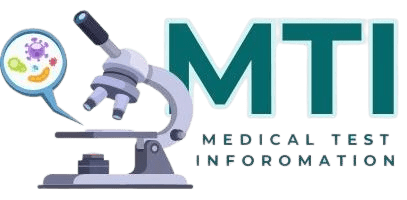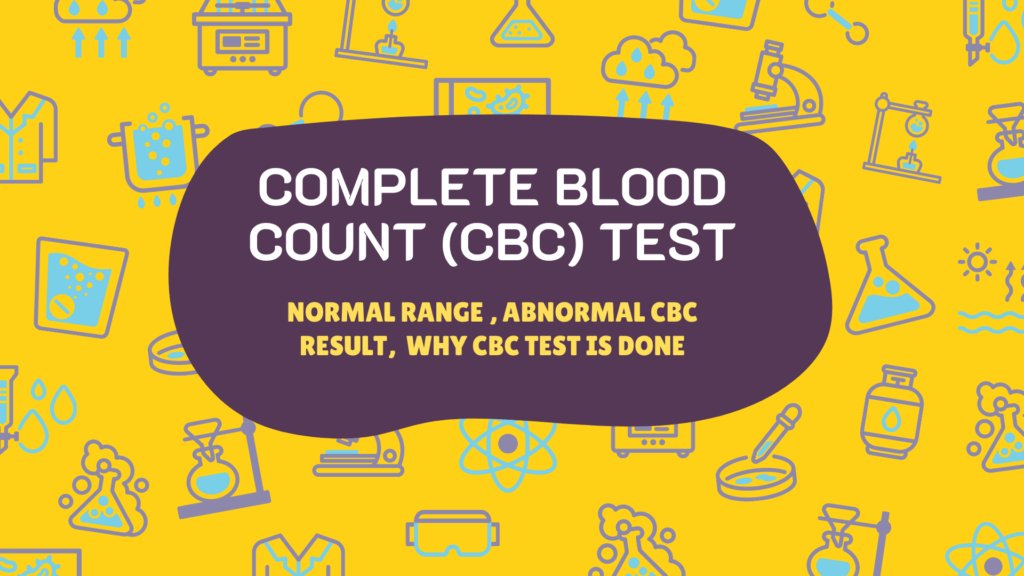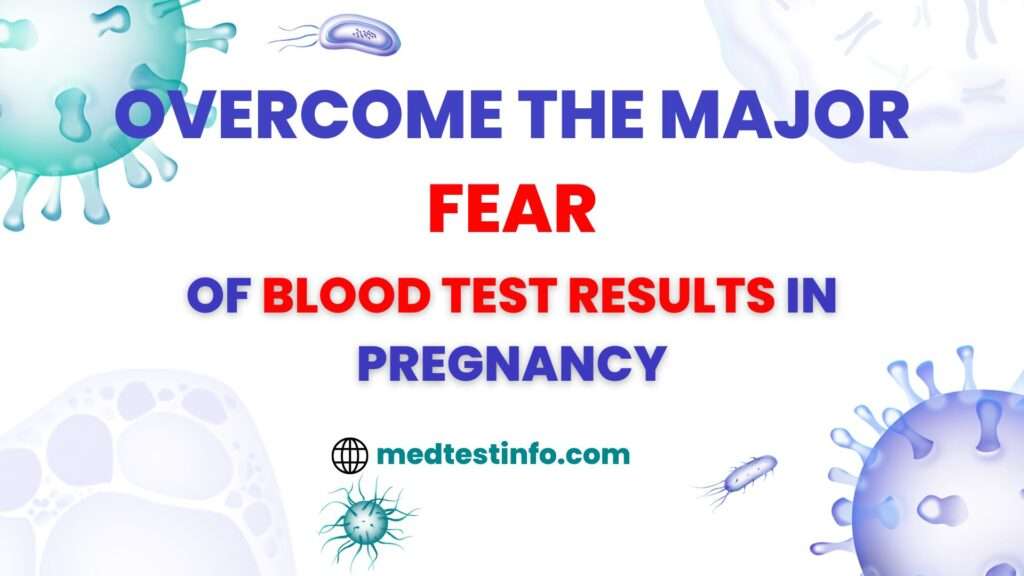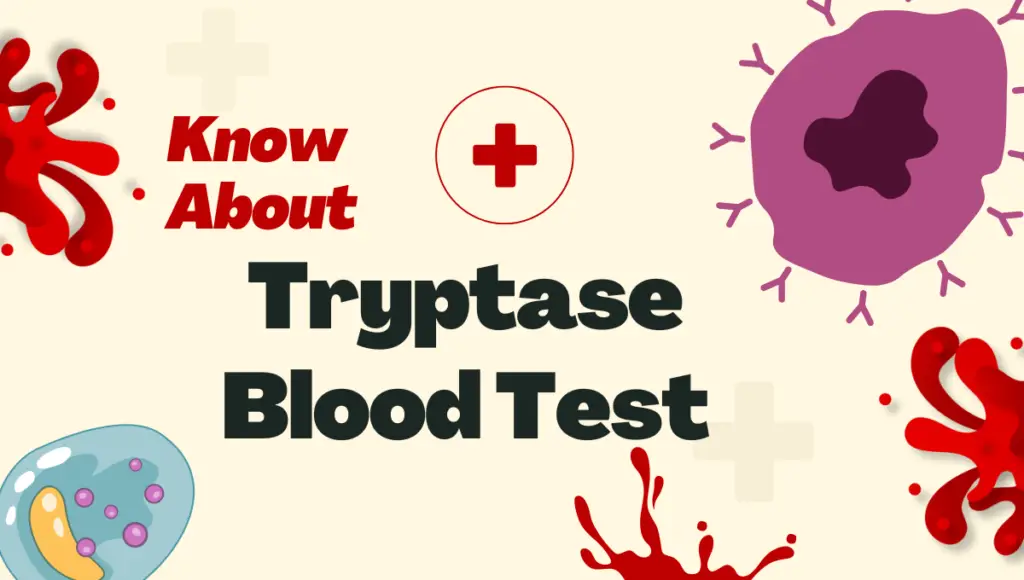
Overview
The tryptase blood test is crucial in diagnosing and keeping track of specific allergic conditions and mast cell disorders. This test examines the tryptase levels, an enzyme that mast cells release. These cells play a vital role in our body’s immune response. This test plays a crucial part in identifying conditions such as mastocytosis and mast cell activation syndrome, and it is also essential for evaluating severe allergic reactions, including anaphylaxis.
When your body comes into contact with allergens, mast cells respond by releasing tryptase and other chemicals. When tryptase levels are elevated, it often suggests that these cells are overly active, which may signal potential health concerns. On the other hand, a low tryptase level can also offer essential insights for medical diagnosis, even if it’s not as frequently encountered.
When doctors suspect issues with mast cell activity or are faced with unexplained allergic symptoms, they often suggest this test. When healthcare providers look at your tryptase levels, they can get to the root of what’s causing your symptoms and work with you to develop a personalized treatment plan.
In this article, we’ll examine the tryptase blood test—its purpose, how it functions, what the results indicate, and the factors that can lead to abnormal tryptase levels. This guide is here to help you, whether you’re getting ready for the test or looking to make sense of your results. You’ll find transparent and trustworthy information to support you along the way.
What Is A Tryptase Blood Test?
A Tryptase Blood Test is a medical examination that measures the level of tryptase, an enzyme released by mast cells, in the blood. It is often used to help diagnose allergic reactions or conditions related to mast cell activation.
A tryptase blood test is a procedure that checks how much tryptase is present in your blood. Tryptase is an enzyme from mast cells, a white blood cell, that plays a role in your body’s immune response. These cells protect your body from allergens, infections, and injuries.
This test allows doctors to evaluate the activity level of your mast cells. You can use this test to identify disorders related to mast cells, including mastocytosis and mast cell activation syndrome. This can also help identify severe allergic reactions such as anaphylaxis, during which mast cells release significant amounts of tryptase and other substances into your body.
Your tryptase levels usually stay within a normal range. When your mast cells become more active or increase in number, you might see a rise in tryptase levels. Elevated tryptase levels may suggest issues like mastocytosis or ongoing inflammation linked to mast cell activation. Conversely, doctors don’t often see low tryptase levels, but there are instances where they might appear, potentially signaling a different health concern.
The tryptase blood test is relatively straightforward. A healthcare provider collects a tiny sample of your blood, which is sent to a lab for analysis. The results provide a deeper understanding of how your mast cells are functioning and can assist in identifying the reasons behind those puzzling allergic symptoms or ongoing health concerns.
This test is crucial in helping us understand conditions linked to high tryptase levels or evaluating how severe an allergic reaction might be. Grasping what the test evaluates and why it matters can empower you to collaborate with your doctor in tackling any underlying concerns.
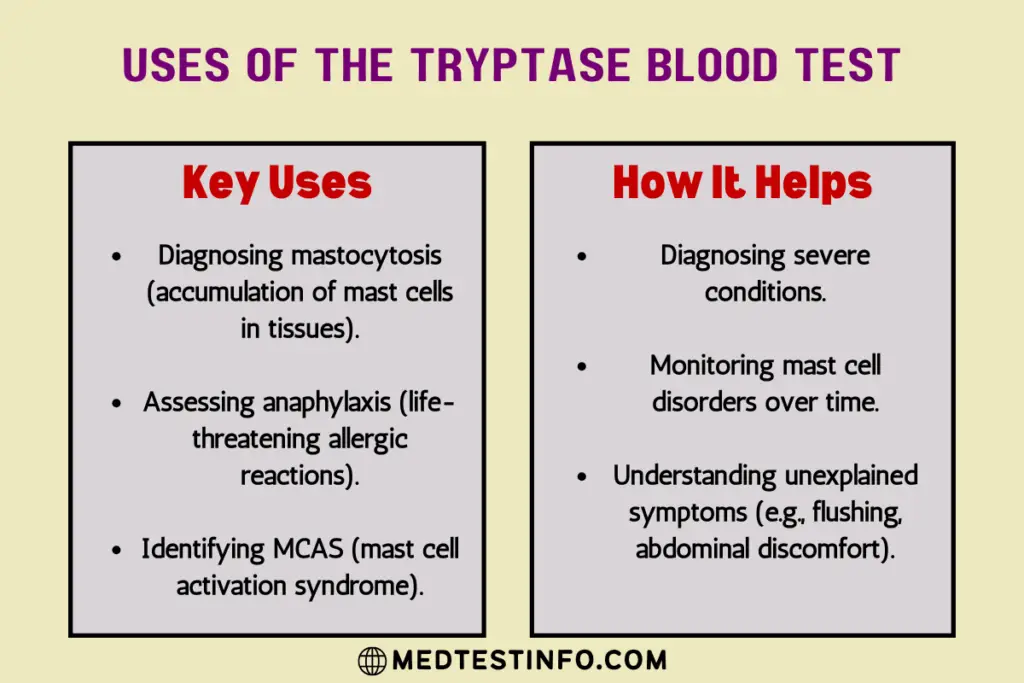
What Is The Purpose Of The Tryptase Blood Test?
Doctors utilize the tryptase blood test to explore and identify conditions associated with mast cells, which play an essential role in our immune system. This test is designed to uncover health concerns related to mast cells’ excessive release of tryptase, which can result in allergic reactions or ongoing health conditions. It’s vital to grasp these conditions’ seriousness and what might set them off.
Key Uses Of The Tryptase Blood Test
The tryptase blood test is primarily performed to help diagnose mastocytosis. This condition involves the accumulation of mast cells in various tissues, such as the skin, bones, or internal organs. The test helps determine if high tryptase levels are linked to this uncommon yet significant condition.
Another common reason for the test is to assess anaphylaxis, which is a serious and potentially life-threatening allergic reaction. During anaphylaxis, mast cells release significant quantities of tryptase. Checking tryptase levels soon after the reaction can help confirm the diagnosis and determine the best treatment options.
Doctors might suggest the test for patients experiencing puzzling symptoms such as flushing, abdominal discomfort, or low blood pressure. These may indicate mast cell activation syndrome (MCAS), where mast cells release chemicals in ways they shouldn’t, leading to various symptoms.
The tryptase blood test serves more than just a diagnostic purpose. It also helps monitor patients who already have mast cell-related disorders. By monitoring tryptase levels over time, doctors can determine if the condition is stable or worsening and make necessary treatment plan adjustments.
Sometimes, the test can reveal reasons for high tryptase levels that aren’t explicitly related to mast cell disorders. Some medications, infections, or genetic conditions can cause elevated tryptase levels.
This test is a crucial resource for recognizing and addressing conditions related to mast cell activity. If you’re dealing with severe allergic reactions or puzzling symptoms, the tryptase blood test can offer important information about your health.
How To Prepare For A Tryptase Blood Test
Getting ready for a tryptase blood test is easy and uncomplicated. Unlike some others, this medical test typically doesn’t need much preparation. By taking a few essential steps, you can help make sure the results are accurate.
Discuss Medications With Your Doctor
Ensure to inform your doctor about any medications you take before the test. Some drugs, such as antihistamines or corticosteroids, can influence tryptase levels and might require a temporary pause. It’s essential to listen to your doctor when changing your medication schedule.
Understand The Timing Of The Test
The timing of a tryptase blood test is critical, particularly when it’s used to diagnose anaphylaxis. The test is most reliable within 1-2 hours following the allergic reaction. Talk about the timing with your healthcare provider to prevent any delays.
Avoid Certain Activities
Usually, there aren’t any strict rules about what you can eat or do before this test. Your doctor might suggest avoiding intense physical activity or high-stress situations, as these can occasionally affect tryptase levels.
Stay Calm And Relaxed
Feeling stressed and anxious can affect how your body reacts, so finding ways to stay calm before the test is essential. Try to get to the testing center early to relax and get comfortable.
Your doctor might give you tailored instructions based on your situation or the test’s purpose. Please take the time to follow them closely for the best possible results.
When you take the time to learn how to prepare for the tryptase blood test, you can help ensure the results are accurate and trustworthy. Getting ready not only aids your doctor in spotting possible concerns but also enables you to take charge of your health meaningfully.
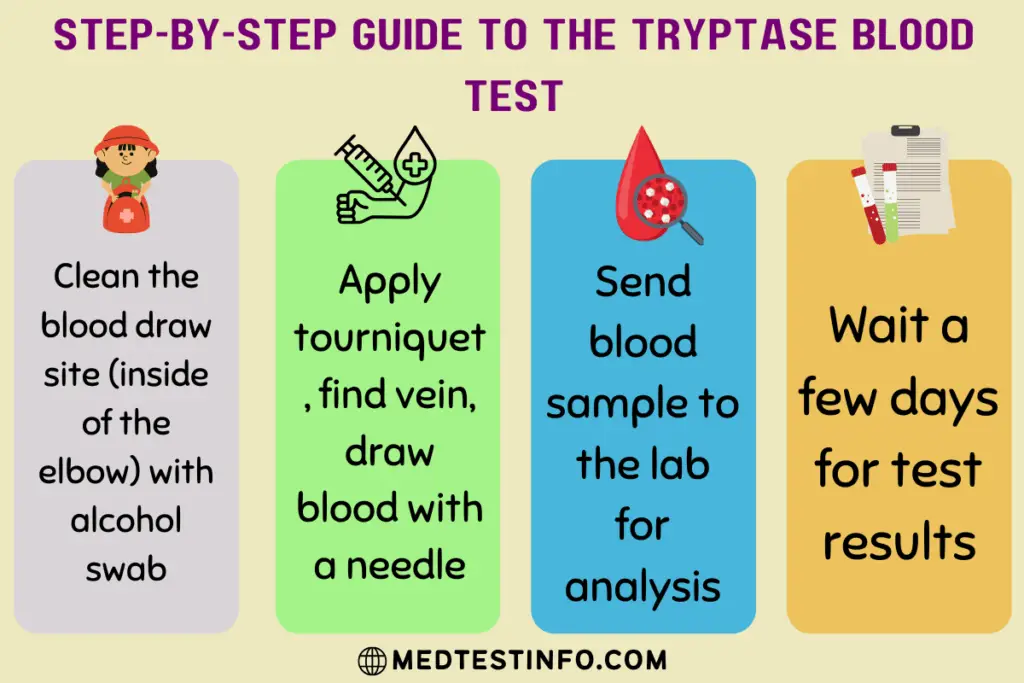
How Is the Tryptase Blood Test Conducted?
The tryptase blood test is a simple and easy process. It means taking a bit of blood, usually from a vein in your arm. It’s a fast process that typically only takes a few minutes.
Guided Approach
Getting Ready For The Test
A healthcare professional will gently clean the spot where your blood will be drawn, typically the inside of your elbow. They use an alcohol swab to help keep things safe from infection.
Drawing The Blood
They’ll gently place a tourniquet around your upper arm when drawing your blood. This helps to make your veins more precise to see. When a clear vein is found, a clean needle is gently inserted to collect blood into a small tube. You might experience a quick pinch or some discomfort, but the process is usually quite gentle overall.
Securing The Sample
After collecting the blood, the healthcare professional gently removes the needle and carefully places a small bandage over the site. You might asked to apply a little gentle pressure for about a minute to help avoid any bruising.
Handling The Sample
The blood sample is sent off to a lab for testing. Technicians check the tryptase levels in your blood to look for any irregularities.
What Happens Next?
You can usually expect to receive the results of the tryptase blood test in just a few days. Your doctor will take the time to go over the findings and help you understand what the results mean for your health. If your tryptase levels are higher than usual, you might need extra tests or follow-up visits to figure out what’s going on.
The whole process is safe and relatively standard. Many only notice a small bruise or soreness where the needle went in. Please tell the healthcare provider immediately if you feel faint or uneasy during the test.
Knowing how to take the tryptase blood test can calm your worries. This test is crucial in helping us understand and manage issues connected to mast cell activity.
Understanding The Results
After you have taken the tryptase blood test, the next step is to make sense of your results. Your doctor can gain essential insights into your health from the results, especially concerning your mast cells and any possible allergic reactions or disorders you might have.
Normal Tryptase Levels
For many individuals, normal tryptase levels tend to be low. The specific range differs slightly from one lab to another, but typical values fall below 11.4 ng/mL. If your results are in this range, it indicates that there aren’t any significant concerns with mast cell activity.
Elevated Tryptase Levels
Elevated tryptase levels, commonly known as high, can suggest various possibilities. Sometimes, it could indicate that someone has had a recent allergic reaction or even anaphylaxis. Symptoms of high tryptase are often associated with conditions such as mastocytosis or mast cell activation syndrome (MCAS). If your results indicate elevated tryptase levels, your doctor might suggest further tests or assessments to resolve the issue.
What Causes High Tryptase Levels?
Several reasons can elevate tryptase levels. Here are some of the usual reasons:
Mastocytosis: A condition characterized by an excessive accumulation of mast cells in the body.
Anaphylaxis: Anaphylaxis is a severe allergic reaction that can lead to a quick increase in tryptase levels.
Mast Cell Activation Syndrome (MCAS): A condition in which mast cells release an excess of chemicals, leading to symptoms such as flushing, hives, and low blood pressure.
Your doctor will examine your medical history and any symptoms you might have to determine what might lead to those elevated tryptase levels.
Low Tryptase Levels
Although high levels often grab attention, low tryptase levels can be significant, too, even if they don’t get as much attention. Typically, low tryptase levels aren’t a cause for considerable concern. However, it may be worth looking into further if you’re experiencing symptoms such as unexplained fatigue or digestive issues.
What To Do Next After Receiving Your Results
When your tryptase blood test results come back, your doctor will take the time to discuss what they indicate about your overall health. You might not need to do anything else if your levels are normal. If the results come back high or low, your doctor might suggest extra tests or a treatment plan to help address the underlying issue.
Interpreting the results of the tryptase blood test is essential for determining the next steps in diagnosing and managing conditions associated with mast cell activity. Whether your levels are where they should be, this test can help you get a clearer picture of your health and find ways to enhance it.
Next Steps After Your Tryptase Blood Test
Once you’ve finished the tryptase blood test, it’s important to remember a few key points to help you understand your results and decide on the best next steps. The test is simple, but understanding the results and what to do next is crucial for properly caring for your health.
Wait For Your Results
After the tryptase blood test, specialists analyze the sample in a lab. This typically takes a couple of days. Wait a bit longer because the lab techs must carefully check your tryptase levels and ensure the results are correct.
Follow Up with Your Doctor
Once you get the results, schedule a follow-up appointment with your doctor. They will help you understand what the results mean for your health. If your tryptase levels are normal, your doctor should monitor your health as time passes. If your tryptase levels are either high or low, your doctor might suggest additional tests or treatment options to explore further.
Additional Tests Or Monitoring
If your tryptase blood test returns with unusual results, your doctor might recommend further tests to help uncover what’s happening. If your tryptase levels are elevated, additional tests might be necessary to check for conditions such as mastocytosis or mast cell activation syndrome (MCAS). Keep an eye on your tryptase levels to help manage your condition.
Prioritize Your Well-Being
Regardless of your test results, taking care of your overall health is essential. If you’re experiencing symptoms such as frequent allergic reactions or skin rashes, you should talk to your doctor about them. Healthy lifestyle choices, like eating a balanced diet and managing stress, can help with symptoms connected to mast cell activation.
Understand The Next Steps
Sometimes, the tryptase blood test might lead your doctor to suggest a treatment plan. This might include medications such as antihistamines or mast cell stabilizers. When diagnosed with a condition like mastocytosis, your doctor will be there to support you and help you navigate the steps needed to manage it.
Keep Records
Keeping track of your test results and any follow-up instructions is essential. As time passes, this can assist you and your doctor in recognizing patterns in your health and making necessary adjustments to your treatment.
Knowing the next steps after your tryptase blood test is essential for caring for your health and tackling any possible concerns. Staying informed and collaborating with your healthcare provider can help you make the best choices for your health and happiness.
Conclusion
The tryptase blood test is essential for diagnosing conditions linked to mast cells, including mastocytosis and mast cell activation syndrome (MCAS). This helps doctors determine whether high tryptase levels are connected to allergic reactions, anaphylaxis, or other health issues. This test offers helpful insights into your health, which can steer your future treatment and management plans.
When interpreting the results, it’s essential to take a thoughtful look at your overall health and any symptoms you may be experiencing. Because tryptase levels can be affected by different factors, talking to a healthcare provider for a complete assessment is essential. They will guide you through the results, discuss their possible reasons, and suggest the best next steps for your care.
Remember that the tryptase blood test is only part of the bigger picture. Your doctor’s knowledge and experience will help you get the correct diagnosis and the care you need for your health.
